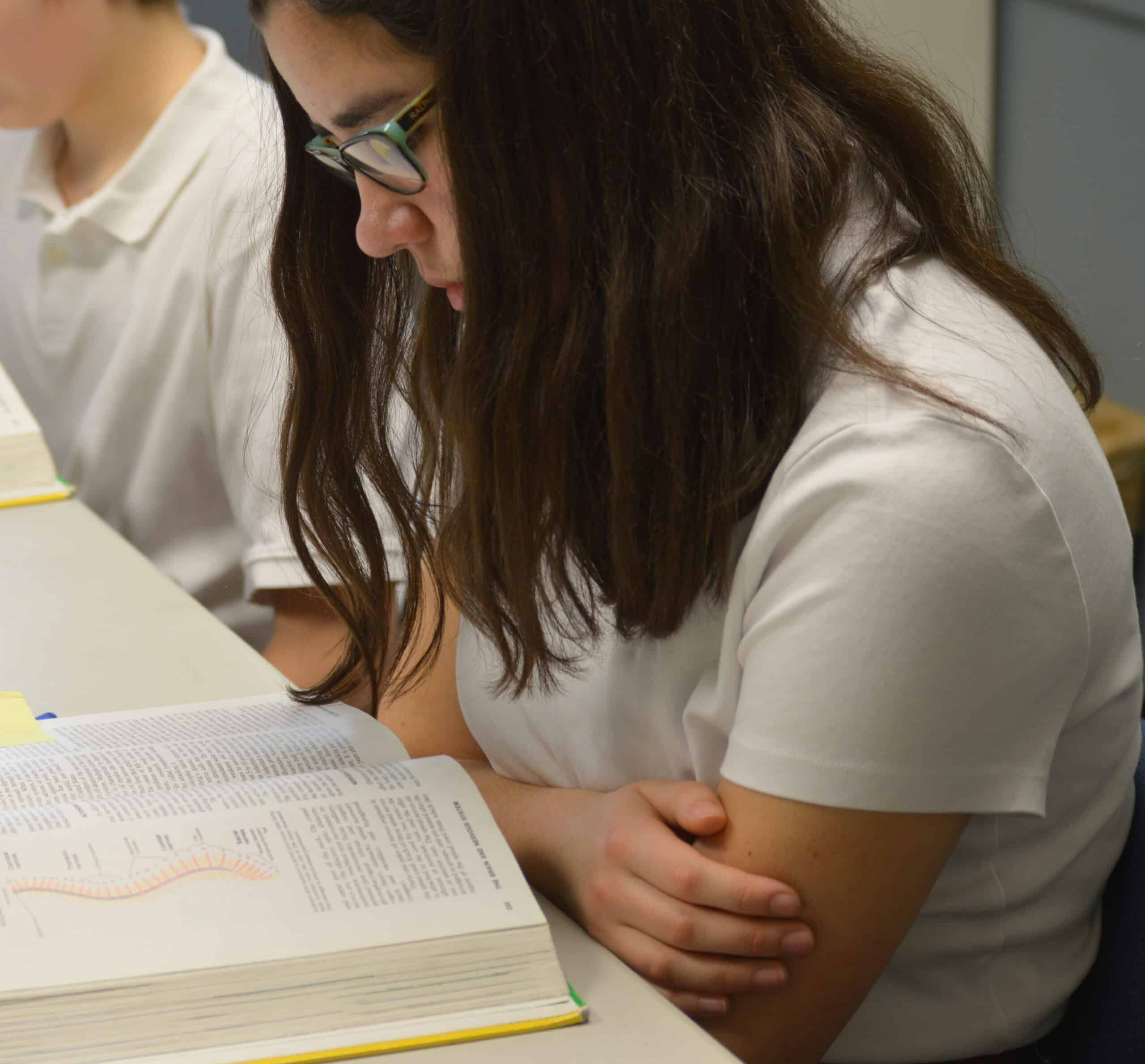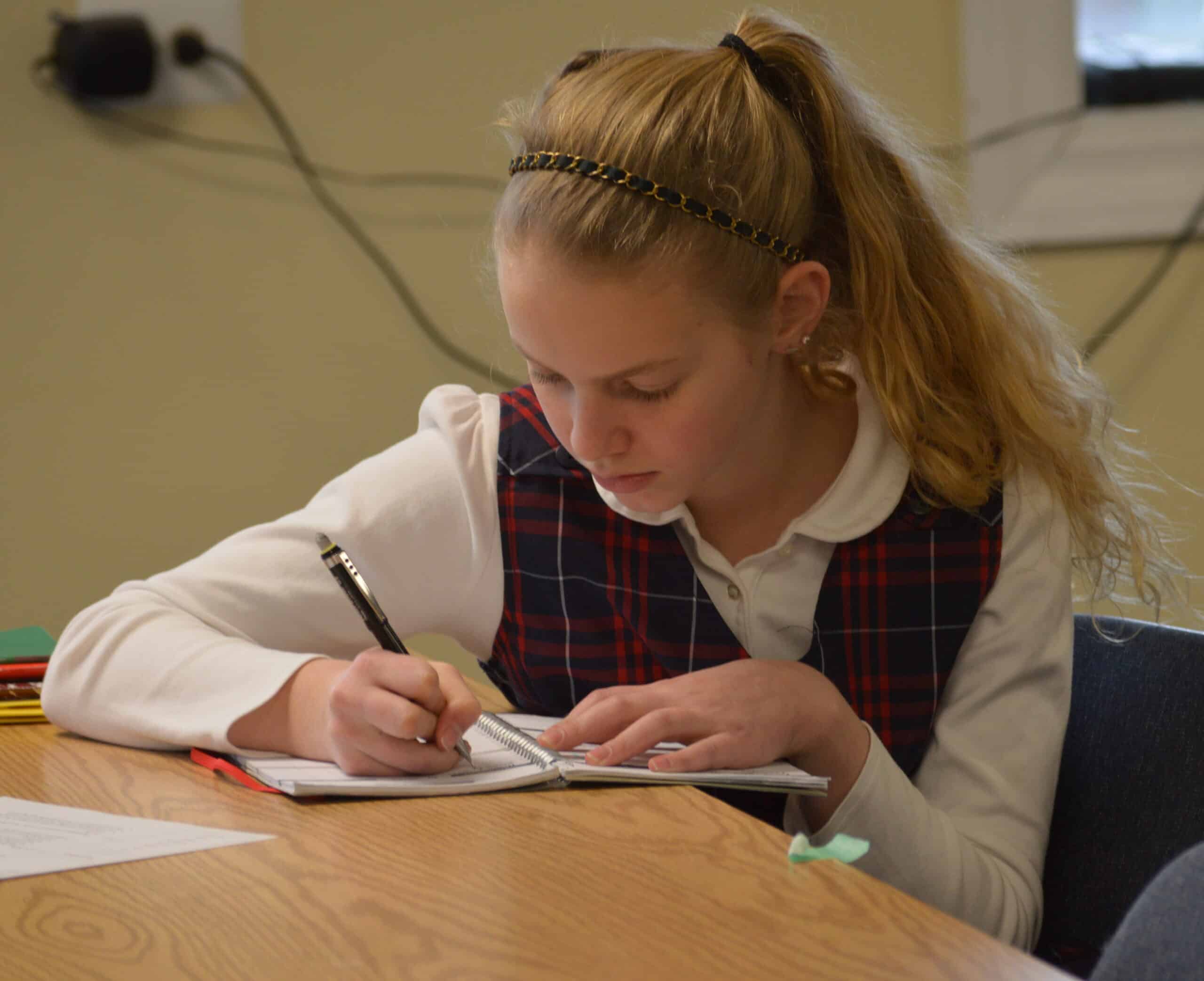You are studying for Physics. It’s hard. The content is difficult. And truthfully, it’s a little boring. You turn on your music and grab your headphones. Some music will surely help you focus and break up the boredom, right? A text comes through. Your friend is letting you know he is also studying. You wonder what chapter he is working on, so you ask. He responds. You grab your pen and do quick calculation. If you finish this chapter in the next 10 minutes you will be ahead of him. You hear your favorite song and then you realize that it’s half an hour later, you are still on the same page, and you cannot remember a word you’ve read!
Sound familiar?
We started this series with a blog post on traditional views of attention where we talked about how classical educators aimed to train students in the habit of focus. In part 2 we focused on the science of attention, bringing in the resources of neuroscience and cognitive psychology to bolster traditional wisdom. In today’s blog we will look at 4 practical strategies for developing the habit of attention.
1. Practicing Attention by Avoiding Distractions
So how then do we go about training ourselves, our children or our students in the habit of focused attention? And more than that, what are we going to do in an unfocused and scattered-brained world to combat the forces of distraction coming at us not just from outside, but even from the incredibly powerful devices inside our own pockets?
In one sense, the answer is simple: avoid distractions and regularly devote stretches of time to focused attention on learning a skill or idea. The hard part of this advice for most of us is that we must prepare ourselves to be bored. Distractions keep us entertained and relieve the painful boredom of focused practice. It’s hard to stay focused! Luckily the part of the brain devoted to the focused mode also helps develop self-control, and that’s something that we could all use a little bit more of.
However, it’s also worth mentioning that when we’ve developed the habit of focused effort, it does become enjoyable. Diligence and joy, right? Joyful discovery! From the runner’s high to the deep satisfaction of intellectual attainment in math or science, or the elation of an expert performance on violin, there’s really nothing like the experience of flow, as psychologist Mihayl Csikszentmihalyi called it. So it’s worth it, but that doesn’t mean we escape the grind; it’s a package deal that requires grit.
2. Practicing Attention with Strategic Breaks
Of course, we need to remember the sage advice from Charlotte Mason, and before her John Locke (see traditional views of attention). In challenging ourselves or our students to grow in attention, we want to push their capacity to attend just enough and not too much or for too long.
When the central executive or focused mode gets overtired, the diffuse mode takes over and day-dreaming ensues.
This is why Charlotte Mason recommended short lessons for younger children and variety in books and subjects; she famously quipped that “a change is as good as a rest.” The focused mode finds relief by switching to another topic or another type of subject, engaging different parts of the mind and body.
It’s for this reason that we have so many different subjects, even if we are always training students in the classical liberal arts through all of them. The variety of moving from a demanding discussion in Bible, to an active recitation of a beautiful poem, followed by a complex history lesson, to a refreshing artist study, then a focused math lesson, and back to a meditative and experiential afternoon nature study, —all with proper breaks and lunch in between—this sequence is purposefully designed to get the most out of students’ natural interest and attention.
In a sense, the principle to apply for all of us is to develop the focused mode through pushing ourselves into our stretch zone, but not too far into our snap zone, where our fatigued focus ability can no longer operate effectively, and the diffuse mode takes over whether we will or no.
The secret is staying in the stretch zone and keeping out of the snap zone!
On this topic Barbara Oakley gives some study advice in A Mind for Numbers that parents might find helpful in supporting after school homework time. She encourages students to set an alarm for 25 min. and try to study with as intense a focus as possible for just that long, before taking a 5 minute break. It’s called the Pomodoro method because the Italian designer used a tomato timer! This trick is effective because intensely focused study is so much more productive than partial focus.
If your students are tired and in need of a break, encourage them to do outdoor activities, movement, or anything that will put them clearly into diffuse mode for 5-15 minutes, and then to come back and re-enter their work with a fresh burst of energy. If there’s a math problem they’re stuck on, let the diffuse mode work on it for a while before coming back to it.
3. Practicing Attention by Studying Less, But More Intensely
In his research for the book How to Become a Straight-A Student: The Unconventional Strategies Real College Students Use to Score High While Studying Less, Cal Newport discovered the surprising fact that the highest performing college students actually study for fewer hours, but much more intensely. And so, he invented an equation to represent this idea:
time studying x intensity of focus = learning productivity
The point is that an incredible amount of time can be wasted when a student continues to work past their ability to devote a high level of focus on the task. A student could spend 3 hours at a low to moderate level of intensity (say, 0.3) and only accomplish what a fully focused effort (1 or 0.9) could accomplish in 1 hour. And that’s not counting the inevitable breaks and mind-wandering sessions that likely occurred during those 3 grueling hours.
The value of such an insight, and its respective habit, for work and life in general is truly astonishing.
Do you want to work for 1 hour or 3 hours on that task?
The habit of giving focused attention to tasks doesn’t just enable excellence, it can result in incredible efficiency.
In essence, we need to be attentive to our students’ focus ability. We need to accommodate it and deliberately train it.
4. Practicing Attention through Retrieval Practice
This ties in to another incredibly practical study skill finding of modern cognitive psychologists. I mentioned the Learning Scientists’ podcast earlier, which I’ve been listening to recently. It was started by two researchers devoted to popularizing the key empirically verified findings of what strategies actually work to improve learning. And the gold standard, what they call the single most important activity to engage in, is what’s called retrieval practice.
It’s exactly what it sounds like, practicing retrieving from memory what you previously read or heard. It’s hard, it’s painful, it reveals how much you don’t know that you thought you did; it’s narration. The classic example of retrieval practice is to close your science book, get out a blank sheet of paper and write down whatever you can recall on a topic from your pure brain.
Now one of the things they stress is that retrieval practice is one of the key ways that durable learning—learning that lasts for the long-term—happens. Retrieval practice is not just what you do in studying for a test, though it is the most effective way to do that. It is the process of learning itself, because it requires your brain to re-access the neural networks that were originally lit up as you were attending to that material. In so doing, the memory of those mental models is encoded in such a way that you can reliably re-access them later.
For our purposes here it’s important to note two things that they stress:
- Retrieval practice requires a high level of effortful attention, and therefore it can feel painful or boring, which is why students so often don’t do it, and prefer merely looking over their notes and creating a false sense of familiarity with the material.
- Retrieval practice itself is a test of the level of focused attention that was devoted to the learning in the first place, and in this way it helps reinforce and train the focus ability itself.
Of course, it’s worth mentioning that there are many ways to do retrieval practice, just as there are many ways to do narration, and they can involve higher levels of complexity, especially if students are dealing with material they can easily grasp. But these learning scientists do seem to confirm such practices from Charlotte Mason and the classical tradition that zero in on the central role of attention to students’ learning and growth.
5. Conclusion
It’s principles like these for developing the attention that have caused us as a school to adopt a model that appreciates the nature of children as persons created in the image of God, avoids busy work, and only gives assignments or homework that are truly worthy and represent meaningful goals.
We’re aiming to develop our students’ ability to focus intensely. We expect them to work hard and diligently at school, and that’s why Explorers (our PK and K) have partial days, why 1st and 2nd have a half day on Wednesday and why we expect more and more of our Middle and Upper School students.
Besides the value of the content in and of itself, we’re trying to respect their humanity and yet develop their attention strategically, so that they can graduate with this central ability to make the best use of their gifts, whether they be artistic or academic, in business or in sports. We want them to be equipped to become excellent at whatever God calls them to do, and for that to happen—the science seems to indicate—first the habit of focused attention needs to be ingrained in them.
In order to cultivate goodness, truth and beauty in the world to the best of their ability, they need to develop through thousands of hours of deliberate practice and attentive effort, as they master the traditional liberal arts.
Let us know in the comments how these techniques of 1) avoiding distractions, 2) taking strategic breaks, 3) studying less, but more intensely, and 4) engaging in retrieval practice have helped you or your student!
{{cta(‘ae2970d6-b589-4299-bd16-a93cce88b50d’,’justifycenter’)}}
{{cta(‘e2e4ad74-3891-4d00-bceb-bcbbb9b8566d’,’justifycenter’)}}





